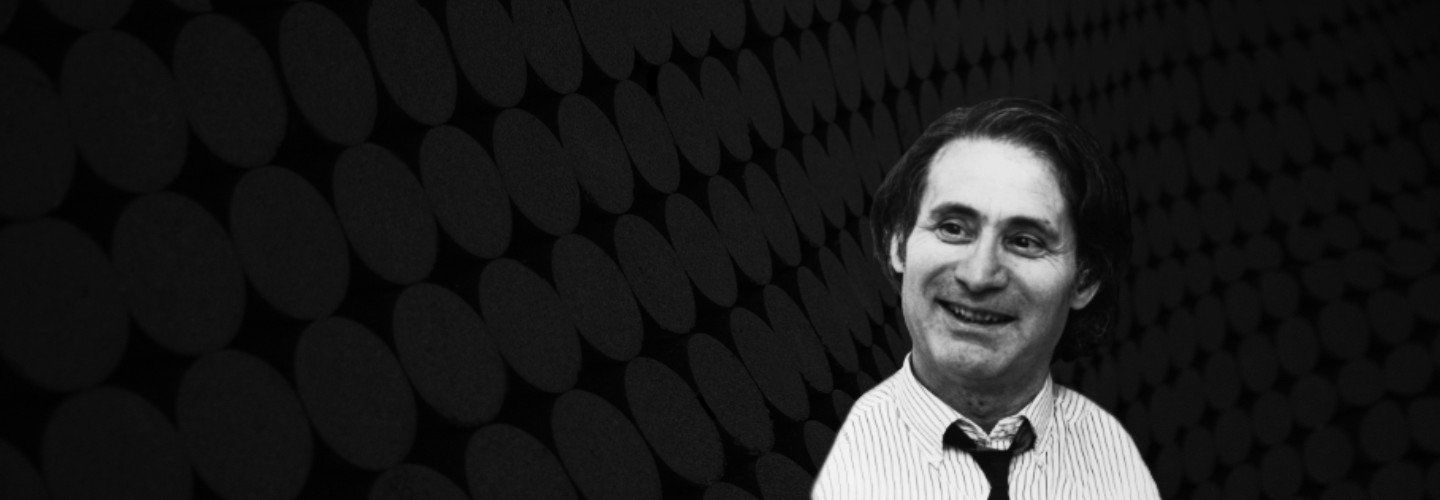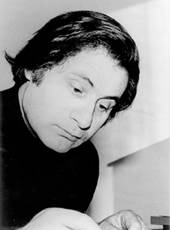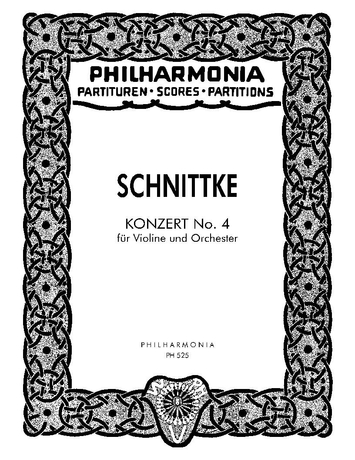

Alfred Schnittke
Concerto No. 4
Short instrumentation: 3 3 3 3 - 4 4 4 1 - perc(6), hp, cel, hpsd, pno, alto sax, str
Duration: 35'
Dedication: Gidon Kremer gewidmet
Solos:
violin
Instrumentation details:
1st flute
2nd flute
3rd flute (+alto fl)
1st oboe
2nd oboe
cor anglais
1st clarinet in Bb
2nd clarinet in Bb
bass clarinet in Bb (+3rdcl(Bb))
alto saxophone in Eb
1st bassoon
2nd bassoon
3rd bassoon (+cbsn)
1st horn in F
2nd horn in F
3rd horn in F
4th horn in F
1st trumpet in Bb
2nd trumpet in Bb
3rd trumpet in Bb
4th trumpet in Bb
1st trombone
2nd trombone
3rd trombone
4th trombone
contrabass tuba
percussion (6 players)
harp
celesta
hpsd
piano
violin I
violin II
viola
violoncello
contrabass
Schnittke - 4. Konzert for violin and orchestra
Printed/Digital
Translation, reprints and more

Alfred Schnittke
Schnittke: 4. KonzertOrchestration: für Violine und Orchester
Type: Solostimme(n)

Alfred Schnittke
Schnittke: Concerto No. 4 for violin and orchestraOrchestration: for violin and orchestra
Type: Taschenpartitur
Sample pages
Audio preview
Work introduction
The Violin Concerto No. 4 was commissioned by the 34th Berlin Festival. Composed in 1984, it received its much-acclaimed first performance in Berlin on September 11 of the same year (the soloist was the work’s dedicatee, Gidon Kremer; Christoph von Dohnányi conducted the Berlin Philharmonic Orchestra). The composer’s commentary on the concerto focuses on its musical material which – as a gesture of Schnittke’s admiration and friendship for Kremer – “derives from monograms of Gidon Kremer, of myself and, in the last movement, of three other kindred spirits: Edison Denisov, Sofia Gubaydulina and Arvo Pärt”. It also derives from his attempt “to set up a melodic tension between one note and another and between notes and rests, making free use of ‘new’ and ‘old’ techniques; and also from two quotations which have left a distinct mark on the work: “The Two Beautiful Plush Melodies (the one recurring throughout the concerto as ‘fatum banalis’ and the other appearing in the third movement as ‘illusory salvation’) are no more than corpses with rouged faces.” In the end the progressive intensification of the music’s expressive qualities leads him to the visually effective point at which he enters the sphere of non-music: when the soloist moves his bow to and fro over the violin without touching the strings. “On a number of occasions (for instance in the Cadenza visuale in the second movement) we venture a glimpse behind the curtain into the hypnotic, silent world of the musical Beyond, the world of the unsounding sound (otherwise known as a rest). Yet these are mere moments, brief attempts to fly, doomed to failure, to relapsing into sound. Or are they not?”
Clearly Schnittke is not prepared to exclude forays into as yet uncharted territory; yet it would appear that his need for constant confrontation rarely if ever involves him in exploring the extremities. His central concern is to experiment again and again with one of the underlying principles of music: “Progress and a historical memory, being two sides of one coin, go hand in hand.” Schnittke has a pronounced and multifarious “historical memory”; yet at the same time he knows that any given musical expression, once it has been formulated, can never be reiterated, which makes the urge for autonomous adaptation both legitimate and indispensable.
The realisation that a composition is bound to be the outcome of a confrontation between spontaneity and convention, between originality and tradition, gives rise to this concerto’s substance and technique.
Maria Bergamo
